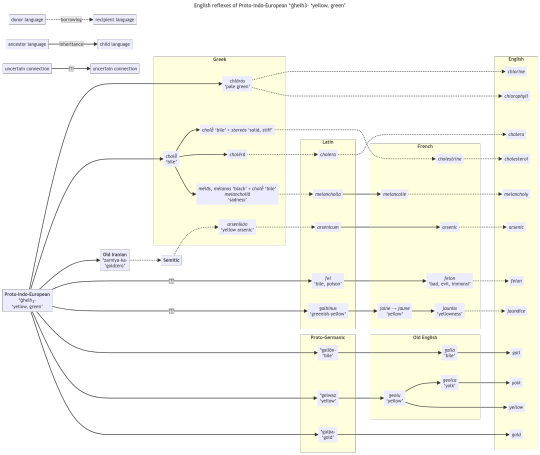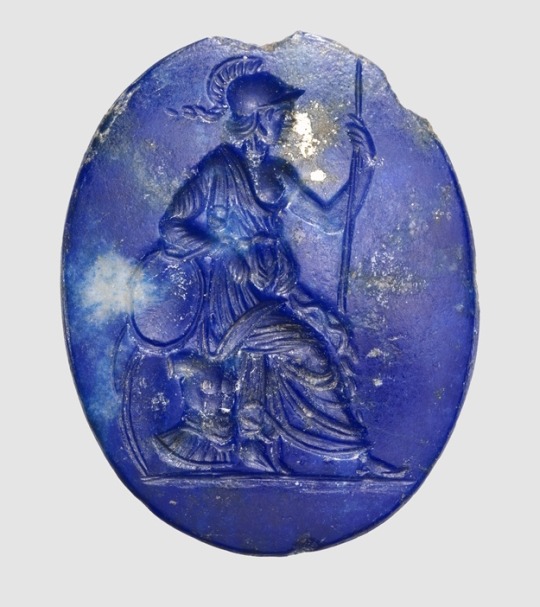#proto-indo-iranian
Text

English is part of a large language family that includes French, Welsh, Polish, Persian, Greek, and Albanian. They stem from a common ancestor reconstructed as Proto-Indo-European. The cardinal numerals from 1 to 10 illustrate their relationship well. Click the image for a selection.
#historical linguistics#linguistics#language#etymology#english#latin#french#german#spanish#welsh#irish#sanskrit#persian#polish#russian#italian#gothic#proto-germanic#proto-celtic#proto-indo-iranian#proto-balto-slavic#lithuanian#ancient greek#albanian#icelandic
86 notes
·
View notes
Text
Finnish words by unusual language of origin
*note: this does not list all the languages that the word was borrowed from, only the oldest known origin of it
*also: if you've never seen a word on this list, please don't doxx me. These are all real words. I don't spread misinformation. Why do I still need to put this in my posts
Job: Ammatti (from proto-celtic *ambaxtos)
Fun Fact: this is the same root that forms the english word “Ambassador”!
Wagon: Kärry (from proto-celtic *karros)
Fun Fact: This is the root that forms the English word “Car”!
Poem: Runo (from proto-celtic *rūnā)
Fun Fact: This is the root that forms the English word “Rune”!
Hikikomori: Hikky (from Japanese hikikomori 引き籠もり)
Clam: Simpukka (from Mandarin zhēnzhū 珍珠)
Goods: Tavara (from proto-turkic *tabar)
Fun Fact: words descended from this root can be found as far as China and Siberia!
Dungeon, jail: Tyrmä (from proto-turkic *türmä)
Fun Fact: This toot extends to Azerbaijan and even Yiddish!
Rauma (city name) (from proto germanic *straumaz meaning stream)
Cherry: Kirsikka (from ancient creek kerasós κερασός which might also have older forms)
Fun Fact: this word is widespread, even appearing in Arabic.
God: Jumala (possibly from proto-indo-iranian)
Fun Fact: This word could be related to Sanskrit dyumna द्युम्न if it is from proto-indo-iranian

#finnish#langblr#langblog#language#study blog#suomen kieli#finnish language#finnish langblr#word roots#proto-celtic#proto-turkic#germanic#celtic#indo-iranian
97 notes
·
View notes
Text
Words you didn’t know are related: gold, yellow, cholera, arsenic, yolk, and more!
The Proto-Indo-European language (the hypothesized original ancestor language of most modern languages in Europe and South Asia, hereafter abbreviated “PIE”) had a root *ǵʰelh₃- ‘yellow, green’.
Aside: How can this word refer to both ‘yellow’ and ‘green’? Historically, color terms in the world’s languages referred to a broader range of colors than they do today, and focused more on the texture…

View On WordPress
#English#etymology#French#Greek#historical linguistics#historical reconstruction#Indo-European#Iranian#Latin#Latvian#Old English#Proto-Indo-European#Russian#Semitic#Slavic
46 notes
·
View notes
Text
*H₂eryo-men
* H₂eryo-men is the fictitious name for a deity in Proto-Indo-European religion, linked to healing, the formation of marriage, and the construction and maintenance of roads or paths. The deity is believed to be responsible for community well-being.
The noun *h₃eryos, which means "a member of one's own group" or "someone belonging to the community," as opposed to a foreigner, is the source of the term *h₂eryo-men. Further derivatives of this root are the Indo-Iranian *árya, "noble, hospitable", and the Celtic *aryo-, "free man" (most notably as aire, "noble, chief" in Old Irish, and as arios, "free man, lord" in Gaulish).
Xaryomen is another spelling of his name.
The Vedic god Aryaman, who is mentioned in the Vedas for his ties to social and matrimonial ties, is one of the descendant deities in later traditions. Similarly, the Iranian god Airyaman, mentioned in the Gāthās, is invoked in prayers to ward off illness, sorcery, and evil. He represents the larger tribal community or alliance. The legend that tells the story of Ireland's founding names the hero Érimón as the first king of the Milesians, the mythical people who inhabited the island after it was taken from the Tuatha Dé Danann. This legend also addresses the roles that *h₂eryo-men played in marriage by giving wives to the Cruithnig, the mythical Celtic Britions or Picts. The influence of the deity is further demonstrated by the Gaulish name Ariomanus, which means "lord-spirited" and was frequently used by Germanic chiefs.
#Gaulish#free man#Proto-Indo-European#Indo-Iranian#Celtic#Old Irish#Vedic#Iranian#Gāthās#Érimón#Milesians#Tuatha Dé Danann#Celtic Britons#Picts#Germanic#community#name#meaning#noble#mythical#marital#man#god#druidicentropy
0 notes
Text
parkashtu
"To hit with a hammer"
parka "hammer" + -shtu, a verbal suffix indicating the use of a tool
This is a relatively uninteresting word, but I thought it was funny because it sounds like the word percussion, but is totally unrelated to it. Parka comes from proto-tungusic (Manchu is a tungusic language) palụka, and -shtu comes from proto-samic (the sami languages are native to northern scandinavia) -stëtēk
#funnier still to me is that the only element that is derived from the base languages for this language i'm working on is the infinitive u#at the end of -shtu#which comes from proto-italic#which with proto-indo-iranian#is one of the two primary sources of grammar and vocabulary for this language
1 note
·
View note
Text
Doing research for a conlang
search: indo-european consonant shifts
results: Grimm's law, Grimm's law, nothing but Grimm's law, Germanic languages are the only ones that exist, don't even bother asking about anything else
search: indo-iranian consonant shifts
results: here's a map of Iran, here's ten thousand maps of Iran, and here's a chart of the Persian writing system. How about Indian food near you?
search: proto-indo-european daughter language sound shifts
results: GRIMM'S LAW BABY!!! And here's a map of Eurasia from Wikipedia for your troubles. Fuck you.
I checked; my library district has exactly ZERO books on any of the subjects I'm looking for across 12 branches throughout the entire county. Remember when the internet was the information super highway? I may as well be asking random strangers off the street!
#research#conlang#pie#proto indo european#indo european#linguistics#dead internet#google doesn't work#I haven't used it in months#but duckduckgo isn't any better#no search engines work anymore#I've tried ask and bing and yahoo but they all just show me the same shit as google with different ads based on the parent company#enshittification
20 notes
·
View notes
Text
Historical Finnish and Indo-Iranian connection?
Yes!
Vajra, Sanskrit for "thunderbolt", is the weapon Indra, the thunder god in Hinduism. In Finnish mythology, the thunder god Ukko's weapon is a hammer or an axe, referred to as vasara or vaaja. Both words have the same origin as the word vajra.
In Finnish mythology, the sky is being held up by a pillar called sammas, which connects to the Polar Star and spins the sky dome. The word's origin is in the Proto-Indo-Iranian word *stámbʰHas, meaning pillar. The words for pillar in Sanskrit, Hindi and other related languages (stambha, stambh, etc) are also of the same origin.
And finally, the Finnish harvest festival and original new years celebration is known as kekri (plus other dialectical varians of the same word). The word originates from the Proto-Indo-Iranian *ḱekrám (later*čakrám), meaning "wheel". I guess it makes sense, considering that people's view of time used to be cyclical instead of linear. A year is but another cycle in time. (The cycle of seasons meaning also exists in later Sanskrit descendants of the word.)
38 notes
·
View notes
Text
Crossposting from Twxttxr: some interesting news about ongoing research by colleagues, from a workshop "Diversification of Uralic" just this Thursday and Friday
Do the Permic languages have loanwords from Old Norse? e.g. ONo. ár ~ Komi & Udmurt ar 'year'. This would've been sensible during the brief time when Norsemen originally from Sweden were in charge of trade along the Volga and settling in inner Russia, forming the Rus' (later Slavicized, but as we know from Byzantine sources they remained Norse for centuries) — and also the Norwegians too were known to conduct exploration + trade along the Barents Sea at the time, our oldest written reports of "Bjarmia" come from them after all.
Do the Finnic languages have loanwords already from Pre-Proto-Germanic into Pre-Proto-Finnic? My first reply would've been "yes surely", this has been discussed for half a century and there's dozens of etymologies out by now. Turns out though that there's still a lot of room for skepticism if we try to assemble a big picture. Most of these could be (and have been proposed by other analyses) to be proper Germanic after all, or from some non-Germanic kind of Indo-European, or even incorrect. There is unambiguous evidence I think at least of loans lacking *ā > *ō, but that's already though to be one of the latest common Germanic innovations, perhaps barely post-PG.
[Follow-up question: do we even know where Pre-Proto-Germanic was spoken? might not have been anywhere convenient for contacts with Pre-Proto-Finnic.]
— A few similar problems also in the less discussed supposed layer of Proto-Balto-Slavic or pre-BSl. loans, but by areal considerations it seems obvious to me there must've been Uralic/IE contact somewhere in the Russian forest belt for ages already, even if it might not have left enough evidence to clearly distinguish from things like pre-Indo-Iranian loans.
Do the Samic languages have loanwords that are not from any historically attested branch of Scandinavian, but some sort of a lost variety entirely? This could be an explanation for an unexpected sound correspondence *j → *ć in many loans; it might also explain some loans that look surprizingly archaic, e.g. lacking any reflection of Siever's Law. One example showing both is indeed *Tāńćə 'Norse', from some sort of a *Danji- variant of Proto-Germanic *Daniz.
Several new hypotheses on the history of of sibilants in Ugric, adding to the growing tally of evidence that traditionally reconstructed *s > *θ and *ś > *s "in Proto-Ugric" are actually later developments. A paper supposed to be coming out soon!
No linguistic evidence so far, but a 1670 travelogue by de La Martinière appears to still report seemingly pre-Uralic populations along the Barents Sea coast — and even on Novaya Zemlya, traditionally thought to have been uninhabited (as reported by other early modern explorers) before some Tundra Nenets briefly settled there in mid 19th century. Apparently there's been no real archeological investigation, but also at least two stone labyrinths are known as signs that humans still must've at least visited there sometime in the past.
[By current knowledge, labyrinths from Sweden and Finland have mostly been built in late medieval and early modern times though, so they don't suggest especial antiquity either. Could the ones on NZ in fact have been left behind by some of these historical Northwest European expeditions?]
Various discussion also on the development of Samoyedic. Nothing particularly all-new (maybe on Nganasan, more on that in a PhD thesis to appear later this year though), but a few main results include 1. clear recognition that there is no "North Samoyedic" group (as has been suspected for several years now), 2. confirmation that there is regardless a narrower Nenets–Enets group, and 3. some development of a model where all three of Nenets, Enets and Nganasan may have moved to the tundra zone independently from further down south (as is certainly the case for Northern Selkup, the most recent northern expansion of Samoyedic speakers).
#historical linguistics#loanwords#language contact#archeology#ethnohistory#uralic#finnic#samic#permic#samoyedic#germanic
28 notes
·
View notes
Text
On the Norse, Indic, and Iranian stories of the origin of the world from the dismembered bodies of a god, from "The Indo-European Myth of Creation", Lincoln, 1975
The general resemblance among these texts is certainly quite
clear. In all of them a primordial being is killed and dismembered,
and from his body the cosmos is fashioned.28 Yet, there are differences in each account (beyond the petty difference that the body-world homologies do not always match up), and it is evident that certain transformations have taken place within each culture and within each text. The dismemberment is performed by gods intwo of the accounts and by a demon in the third. The victim is
accompanied by an ox in one text, a cow in another, and has no
companion in the third. The act is treated as a sacrifice once, but
as murder twice. Most perplexingly, the names of the victims bear no resemblance to one another. The primordial victim is Ymir in Scandinavia, Gayomart in Iran, and Purusa in India. The question must arise: Are these figures who are structurally so similar really related in any historical way ?
The answer is certainly yes, and it is here that the Old Norse version best preserves the P-I-E heritage. Old Norse Ymir, as Guintert first demonstrated, is derived from Proto-Germanic *yumlyaz, which in turn is derived from P-I-E *ya2m(i)y6s (*Ymr[mi]y6s, as it might be written in a more modern orthography), a term intimately related to P-I-E *yemo- "twin."29 This word corresponds to Lettishjumis, "double fruit"; Middle Irish emuin, "twin"; Latin geminus, "twin"; Avestan yama, "twin"; and, most significantly, to the proper names Avestan Yima = Sanskrit Yama, which literally signify "twin" as well.30 Based on this phonological and semantic correspondence, we hypothesize that there was originally a mythic correspondence and that all are derived from a figure in the P-I-E myth.
Iranian evidence supports this hypothesis, for behind the figure
of Gay6mart we may discern the older figure of Yima.3' The way
in which this transformation took place is somewhat complex. First, it must be recognized that in pre-Zoroastrian Iran, Yima was not merely king of the golden age, but, as Christensen so skillfully demonstrated, was regarded as first king, first mortal, and first to die.32 This tradition, however, was rejected by Zarathustra, who soundly condemns Yima the only time that he mentions him (Yasna 32.8). There is one verse, however, in which Zarathustra
does make an oblique reference to the myth of creation by sacrifice:
YASNA 30.4
And when these two spirits first met [the good and evil
spirits], they instituted Life (gaem) and non-life, and how life should be at the end.33
Moreover, these two spirits are said to have "appeared in the
beginning as two twins (yjmd) in a dream."34
In these verses several eminent Iranists have recognized that
Zarathustra attempted to deal with an earlier myth of creation
which he found objectionable but which he could not completely
ignore.35 Thus, he philosophized the myth, changing its characters into abstract entities, but retaining the essential mythologem that the first living man died at the creation of the world. Ironically, however, a re-mythologization of Zarathustra's
version took place in later centuries. In the verse cited above, the
Avestan term translated "life" is gaya-, which in the Younger Avesta is often combined with the term maratan-, "mortal"36 to
form the name given the first mortal man, who was created and
died at the beginning of the world-Gaya maratan.37 This name
comes into the Pahlavi (Middle Persian) of our Bundahisn text as
Gayomart. Thus, the development is
Middle Persian Gayomart < Younger Avestan Gaya maratan < Gathic Avestan gaya < Pre-Zoroaster Yima
In India, too, it seems that the figure of Yama lies behind the
Purusa of the Vedic hymn. Most scholars have agreed that Yama
is another First Man/First King figure and have also noted that
he is the first to die, thus establishing the realm of the dead.45
Several scholars, however, have been willing to go somewhat further and equate his freely chosen death and his abandonment
or transcendence (< Skt. pra-Vric-) of his body as in RV 10.13.4
with the sacrifice in Purusa in RV 10.90.46 As Dandekar, who
most effectively argued the case, put it, the Purusasuikta is merely a more detailed setting of the Yama myth of RV 10.13.4.47 In light of the comparison to Ymir and Yima, I am inclined to agree.
The name Purusa literally means "Man" and seems to be a title
born of philosophical and theological speculation. Such speculation changed this figure's name again in the Brahmanas, as Purusa, "Man," became Prajapati, "Lord of Creatures,' but the under-lying story is still the same.48 The morphological and structural features convince us that this is the same figure encountered in Iran and Scandinavia-*Yenlo, "Twin"-first king49 and first sacrificial victim, from whose body the world was made.
honestly the purusa connection seems kind of dubious (although i mean, yama being a first-man figure and purusa just meaning "man" does seem like a strong association) but i love how elaborate and yet imo totally plausible the yima->gayomart transformation is
also if youre curious, lincoln argues that dismembering-god-to-make-the-world stories arent independent even though we see an example that should be independent in china, he argues that's influence from india. he also alludes to a similar polynesian and south american myth which must be independent but he doesnt give any details and i cant find any so no idea whats going on there
44 notes
·
View notes
Text
a few notes on studying pre-christian slavic religion:
anything ever written about slavic polytheism by v. ivanov and v. toponov is wrong. these people would claim bacchus to be a hypostasis of the buddha if they could. in general i'd say russian scholarship on slavic polytheism is quite poor, on account of the flourishing of rodnovery and similar pagan revival movements in the country—a bummer, bc the rus' are one of the two main sources on pre-christian slavic religion we have. the 'purest' records of slavic paganism we have come from where it was forgotten, where theonyms were relegated to toponymy and pre-christian rituals survived only in half-remembered folk proverbs; where neopaganism and romantic nationalism touched pre-christian slavic polytheism, they mutilated it (sometimes irreparably)
the other main source we have are the accounts of the rites and beliefs of polabian slavs—a bummer, bc the polabians appear to had practiced a deeply divergent form of slavic religion. the (taboo?) replacement of more-or-less all theonyms with honorifics and euphemisms is particularly exasperating. i imagine this was partially due to their placement at the western edge of the slavic world, and partially due to the effects of their resistance against germanic settler colonialism and christian proselytisation on polabian society and ritual
the relationship of slavic religion with that of the indo-iranian peoples is. complicated. the contact between the two was quite intense and very long, and the influence of iranic peoples (through the scythians, in particular) on early slavic society was immense. reconstructing what slavic religion looked like before iranisation is impossible, though baltic folklore might prove helpful as a point of comparison. well, unless balto-slavic and indo-iranian do in fact constitute a single clade within the indo-european family—in which case the similarities between the two might as well be ascribed to recent common descent
on the topic of (indo-)iranians—the question of a zoroastrian substrate in pre-christian slavic religion remains open! the main point of debate is the etymology of proto-slavic *divë, 'giant; demon'. descendants of the reconstructed form appear to be mostly restricted to south slavic languages, which might point to the word being borrowed from (the systematically persianised ottoman redaction of) turkish. even if the word was borrowed from proto-iranic *daywáh (whence daeva, 'demon'), iranic influence on the slavs goes way, way back before zoroaster's reforms; attempts to outright extrapolate slavic cosmology from zoroastrianism are bunk. there is no evidence of dualism in pre-christian slavic religion
so! basically: if you must compare slavic religion with other indo-european faiths, compare it with baltic religion first; iranian (scythian, etc.) religion second; indo-aryan (vedic) religion third; and germanic + finnic religions fourth, if only to sieve out the possibility of borrowings. the kievan rus' appear to have directly borrowed some deities from the iranians (like khors), without even modifying their names or bothering with interpretatio slavica—i pray the origin of other borrowed deities is just as transparent
#i'm ordinarily not this utterly preoccupied w slavic paganism#but this is the first time i've ever devoted serious attention to the subject despite being mildly interested in it for years#vampire poasting shall resume shortly
16 notes
·
View notes
Note
I just read through the link you gave me about the Mardi/Amardi people and I. Holy.
Because first of all, “They are said to be related to, or the same tribe as, the Dahae and Sacae(Saka).” and we both speculated that Gieve may have some relation to the Saka and... what.
But that isn't even the best/worst part.
Because, right? I mentioned that I tried to conlang a language for the Marda clan in Wolfpack (well, not for Wolfpack, it was for Ruling Heart of Glaciers) and... the name Marda. In the conlang. Was supposed to mean “human”. Or “weak”. They're synonyms for a theme that I think I largely ditched (weak humans rising up against the divine and whatnot) but okay, okay— and look at this about the Mardi/Amardi name: “The term Mardi comes from the Old Iranian word for "man" (Old Persian: 𐎶𐎼𐎫𐎡𐎹 martiya; from Proto-Indo-European *mr̥tós, "mortal").”
Sincerely, what the fuck? What is this coincidence. I swear I didn't even know about the Amardi until today.
It's the same etymological origin as Daryun's 'Mardan fu Mardan' epithet! I had to send it to you because my eyes kept getting wider because I just kept thinking of your AU.
10 notes
·
View notes
Text

English (he/she) eats, Welsh ysa, Ancient Greek édei, Sanskrit átti and Polish je all stem from the same Indo-European verb. Over time, words change beyond recognition, undergoing regular sound changes and irregular alterations. Here's the family of eats.
#historical linguistics#linguistics#language#etymology#english#latin#dutch#spanish#german#scots#frisian#low saxon#limburgish#afrikaans#luxembourgish#yddish#sanskrit#proto-indo-iranian#latvian#lithuanian#russian#ukrainian#bulgarian#macedonian#old church slavonic#serbo-croation#slovene#slovak#czech#polish
134 notes
·
View notes
Text
People keep asking why "Appelsiini" isn't "apple".
The word comes from Early modern Swedish "appelsin" which in turn comes from either Dutch "appelsine" or Low German "Appelsin"
These words ultimately stem from a calque of "pomme de Sine" (chinese apple) from French.
So you might be half-right saing that the "appel-" part of "appelsiini" is related to the english word for "apple". However, the word "appel" does not exist in Finnish. The word was loaned based on it's sound, not translating it directly to "kiinanomena"
"Apple" is "omena" in Finnish, which comes from Proto-Finnic *omëna (and might be linked to Indo-Iranian)
In Finnish, the word "orange" (oranssi) does not mean both the fruit and color like it does in English. It is only the color.
Now you know!

#finnish#langblr#langblog#language#learning#finland#study blog#suomen kieli#suomi#finnish language#appelsiini#orange
37 notes
·
View notes
Text
azure
During classical antiquity the semi-precious stone lapis lazuli was mined in a place called Lāžvard around modern Afghanistan. That’s also the name of the stone in Classical Persian (لاجورد). It comes from the Proto-Indo-European root *ǵʰelh₃- ‘to gleam, to shine’ + Proto-Iranian *varta- ‘stone’.
Other words that come from *ǵʰelh₃- include gold, yellow, felon, glow, and cholera!
Medieval Greek…

View On WordPress
30 notes
·
View notes
Text

Hauma-drinking Scythian on western stairway of Palace of Darius 6th-5th C. BCE.
"The Sacae, who are Scythians, had on their heads tall caps, erect and stiff and tapering to a point; they wore breeches, and carried their native bows, and daggers, and axes withal, which they call 'sagaris'. These were Amyrgian Scythians, but were called Sacae; for that is the Persian name for all Scythians."
-Herodotus, The Histories, Book 7, Chapter 64
...
"The Amyrgians (Ancient Greek: Αμύργιοι Amúrgioi; Latin: Amyrgii; Old Persian: 𐎿𐎣𐎠 𐏐 𐏃𐎢𐎶𐎺𐎼𐎥𐎠 Sakā haumavargā "Sakas who lay hauma (around the fire)") were a Saka tribe.
The Greek name for this tribe, Amúrgioi (Αμύργιοι), is the Hellenised form of the Old Persian term Haumavargā (𐏃𐎢𐎶𐎺𐎼𐎥), meaning "who lay hauma (around the fire)," and can be interpreted as "revering hauma." The full name of this tribe in Persians Achaemenid inscriptions is Sakā haumavargā (𐎿𐎣𐎠 𐏐 𐏃𐎢𐎶𐎺𐎼𐎥𐎠), that is the Sakas who lay hauma (around the fire)."
Haoma has its origins in Indo-Iranian religion and is the cognate of Vedic soma. Both Avestan haoma and Sanskrit soma derived from proto-Indo-Iranian *sauma. The linguistic root of the word haoma, hu-, and of soma, su-, suggests 'press' or 'pound'.
-taken from wikipedia
#scythian#saka#persia#persepolis#history#ancient history#indo european#literature#herodotus#darius the great#statue#sculpture#pagan
42 notes
·
View notes
Text
Voices of Nälkä
This can give you all an idea of what Sarkic/Nalkan language (Adytite) sounds like (though Adytite includes many Daevite loanwords, which I imagine as a Proto-Indo-Iranian language
53 notes
·
View notes